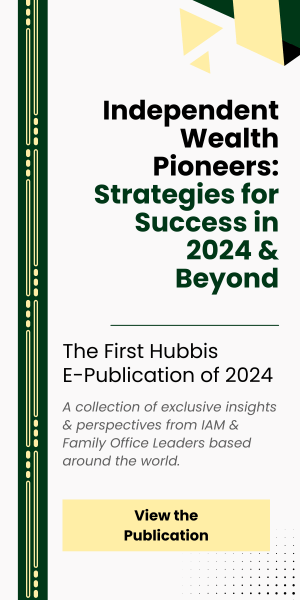Publications & Thought Leadership
Future-Focusing and Toughening up Private Client Portfolios in the Face of Mounting Global Concerns

Jul 14, 2022
How should private clients in Asia go about constructing resilient, multi-asset class portfolios in the face of rising inflation and rates, geopolitical worries, ongoing supply chain disruption, and eroding valuations in the mainstream public markets? A small group of experts assembled to discuss exactly these issues on June 9 in Singapore – at an event that was kindly sponsored by MSCI They concluded that portfolio diversification is essential, that yield and value should be emphasised above growth and growth’s racy valuations, and that allocations to private assets and ESG-centric companies are increasingly important. They said that Asia is moving back into favour, with China carved out as a separate market increasingly, much like Japan some decades ago. The experts also concurred that Japan’s star appears to be rising again. And towards the end of the conversation, they agreed that the many threats around inflation, rising rates, and weaker markets would probably not, at least for now, add up to a new 1970s-style stagflation crisis.
Gareth Nicholson, CIO and Head of Discretionary Portfolio Management at Nomura in Asia, opened the discussion by stating that the Nomura house view had inclined towards caution since 2021, driven largely by headwinds relating to China and that they had been sitting on a lot of cash for some time.
“But now that we have had a large correction, have we had enough, have we hit bottom?”, he pondered. “Personally, we still think there is more pain ahead. The Fed has to keep its inflation-fighting credibility, the Fed is also behind the curve, and according to one ex-Fed board member who spoke at a recent Nomura event, they need to stay aggressive, and won’t stop until they see inflation turn around.”
The result, he extrapolated, is that investors must focus on diversification, balance and defensive assets that have more tailwinds. “And we believe that in the second half of 2022, that’s going to come from Asia,” he said, concluding his introductory remarks.
Natural limitations of cash
Audrey Goh is the Head of Asset allocation and Thematic Strategy in the Wealth Management Group at Standard Chartered Bank, and works extensively with the private bank clients as well as retail clients.
She highlighted that that the downside to moving to cash is its limited growth potential. While inflation remain elevated, the same dollar of cash may buy lesser than what it used to. For many private clients, once they move into cash, they find it very hard to time and re-enter the markets. Historically, the worst days for returns tend to be followed by the best days for returns. And that would likely mean investors would also miss the best days for returns, which as everyone knows, would be highly detrimental for performance, judging by history. “We all know that during periods where market volatility is high, we tend to get wild overshoots on both the upside and on the downside,” she said.
Accordingly, she explained that from an advisory perspective, they can also work with clients to shift to a more defensive stance and more cash flow generating stocks, in line with their overall risk tolerance.
“And we look at diversifying portfolios into less volatile areas such as private assets, or maybe even in the alternative space where year to date they have actually done quite well relatively,” she reported. “For clients who adopt those strategies, they tend to be able to stick to their own investment portfolio for longer, ultimately benefiting their wealth generation over the long term.”
Shoring up the defences
Juan Aronna, Head of Investments for Asia and the British Isles with RBC Wealth Management, said that faced with all the uncertainties in the world and markets, they had adopted a robust view on what they call ‘fortress stocks’.
“These stocks have moats and defences such as powerful brands, the network effect, and other factors, of which the most important is the capacity to pass on inflation to consumers, such as the Apples of this world,” he told guests.
He added that the high dividend yield space is another area that had been performing relatively well this year. On the fixed-income side, he explained that they had trended towards short duration debt and private debt, which are less affected by rates. And he said they had implemented long-short positions. But in general, he agreed there were not many places to hide during these times.
Alternative and active
Gareth expanded on the trend towards greater investment in alternatives, reporting that this segment had transitioned from ‘nice-to-have’ to essential nowadays.
“We actually think of alternatives as the basket of assets that provide low-correlation alpha,” he explained. “These could be REITs, hedge funds, commodities, energy infrastructure, amongst others.” He said this reduces correlation to the main market assets and enhances income streams.
He extrapolated from these comments, adding that active management is coming into focus again after a good number of years when the passive approach has worked so well. “I don’t mean only passive funds like ETFs, I mean just buy and hold worked so well,” he added. “Now it’s about using ETFs and other passive instruments, but actively, for example, rotating through the sectors, moving to segments with tailwinds, and constantly conscious of the risks.”
ESG? Yes, but with caveats
Juan explained how the wealth industry in Asia was finding it tough to sell the ESG story to private clients, so particular approaches need to be devised.
“It’s not a product; it’s not something we can touch,” he explained. “And there is a lot of scepticism amongst many clients regarding its merits. But we translate to what we call SusTech, which is a combination of sustainability and technology. We focus on key pillars, such as the food revolution, water, air quality, smart cities and things like that, curating understandable investment themes.” He said people seem to understand this concept and find it easier to buy into it.
He told fellow guests that they use ESG data from MSCI, as well and Barra and WealthBench for ESG metrics to help them construct the portfolios. “But the key for us is to communicate in ways that the clients can understand,” he elucidated, “such as the investment implications of the water crisis in California or in South Africa. For private clients, they need to see and buy into the concept.”
The luxury of time and money
Juan added they had recently bought the latest MSCI carbon emissions report. “It is interesting, as clients can then see the carbon emissions in their portfolios,” he commented. “I think this is not yet so relevant across the full range of private banking clientele but is more for the type of UHNW clients that have the luxury of taking a multi-generational perspective.”
He said some of these UHNWs are thinking ahead about these issues and planning for their family wealth 100 years ahead. “Meanwhile, let’s face it, most of us are thinking about how we’re going to survive until our retirement,” he quipped. “But when you have billions, you can think a little bit differently. Most private clients are however goal-focused. They want income or gains or geographical diversification, and ESG is secondary, so we need to tie these stories together.”
ESG’s global wave is building
Audrey said that Standard Chartered is also making a big push into ESG but agreed it takes time to get clients onboard. The key issue for investors, she said, is that with countries such as the UK becoming the first G20 nation to mandate climate risk disclosure for their listed companies and the US likely to follow suit, companies which do not adapt are likely to see a higher cost of capital, potentially representing a greater risk than those who adopt and adapt to ESG disclosures.
“Yes, we are thinking about how we then translate all this to clients, so they can buy into the narrative,” she added. “From our viewpoint, this tide is coming in, it is getting more regulatory and governmental tailwinds, and as advisors, we need to be able to bring this front and centre to clients. Otherwise, there could be a real and rising risk to the portfolio.”
Advice for the clients
The conversation turned away from the perennial debate on ESG to the advice that should be curated for private clients in the face of global financial and market conditions.
Diversification is the number one rule, Audrey Goh asserted. Number two, she indicated, is to see and seize the opportunities to deploy cash when prices drop. “Clients are building wealth for the generations ahead as well and it should not be just about the next six months or one year,” she remarked. “And we also favour Asia ex-Japan at this time, as the region has underperformed for so long. Moreover, China seems to be turning the corner to some degree as well, so we like China currently.”
Asia’s star is rising again
Gareth agreed with the growing focus on Asia, adding that Nomura had been holding a positive view of the region for some months.
“We are moving to high conviction,” he reported. “If I break it down, the ASEAN countries are opening up, they are less dependent on the actions of the US Fed, they’re letting inflation run higher, they’re letting their currencies depreciate more than in the past because they’ve got more reserves, because they’re in a different kind of environment. We think there is definitely less scope for the region to go into recession than Europe or the US. We see some interesting opportunities in Indonesia, and Singapore, and Malaysia in particular. And further afield in Asia, China’s reopening is also high conviction for us, although probably a shorter-term play.”
Japan in the sights again
Gareth also reported that Japan is a major recommendation for Nomura. “Inflation is eventually set to kick in there, you can see what is happening with the Yen, there is political stability, a greater focus on earnings than ever before, trade is opening up again, savings are plentiful, and capex is increasing after significant underspend. All in all, we think Japan has an interesting story right across the board.”
Juan agreed, adding that taxation is being amended to promote wage hikes, and there is a drive to shift investments to growth sectors and digitalisation, especially as Japan struggled to work remotely during the pandemic due to inefficient infrastructure. Surprisingly, he reported, the government is probably one of the worst from a digital standpoint in the developed markets. “We think that Japan will perform a catch-up in this regard,” he said.
He also agreed that China’s popularity would similarly be likely to increase amongst investors, at least if China’s leaders adopt a slightly less rigorous approach to the pandemic and the idea of zero-Covid.
Managing clients and expectations
Gareth observed that a major challenge in difficult market conditions is to guide anxious clients through the turmoil. He said they try to remain highly disciplined, and data-driven, relying for example on MSCI data and others to make discussions more relevant and robust.
“The data and analysis definitely help us determine when there is more risk and when there are opportunities,” he said. “We take the time for more discussions with clients, more reviews, and we always try to be open, and we’ll also look objectively at where we might have made the wrong calls. However, in well-diversified portfolios, those problems should be only a small element of concern as risks will be well spread and balanced.”
That 70s Show?
The discussion rounded off with a question from the invitees on the risks of stagflation, and the risk of the 1970s all over again.
“We had our Nomura conference yesterday and at the end over a glass of wine, we had four economists opining, and none of them could agree with each other,” Gareth reported. “However, if I can interpret, I think they would all agree that we are not heading towards a 1970s stagflation. I can summarise their views as we are heading to a slowdown in growth, inflation that will plateau out at a higher level for some time, but the economy and the flexibility in the markets are not indicative of a 1970s kind of environment. Yes, it will be rough, and yes, volatility is going to be high, while balance sheets and earnings will be weaker, but this does not look likely to translate to anything near as bad as those times back in the 1970s.”
Juan noted that the US and Europe would struggle more than Asia, largely because price rises are so acute that spending power is falling, and caution is increasing.
Hold on to hope
The final word went to Audrey, who agreed with Gareth’s summary and noted that the 1970s suffered a massive rise in unemployment and that caused consumption to slump and optimism to erode.
“Today,” she remarked, “people are suffering high inflation, but employment remains quite strong, and wages are also going up, albeit perhaps not as fast as inflation. Earnings are not being significantly weakened, and if companies can demonstrate that they are able to manage through this inflation pressure and still continue to grow their profitability, albeit more slowly, then maybe there could be more upside to risk assets as well.”








